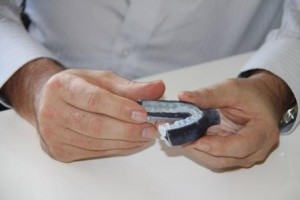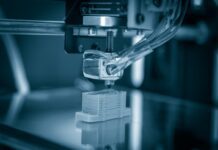Researchers from the Commonwealth Scientific and Industrial Research Organisation (CSIRO) have collaborated with dental company Oventus to create a revolutionary mouthpiece that prevents life-threatening pauses in breath during sleep.

According to the media release by CSIRO, around one million Australians suffer from sleep apnoea, which can lead to high blood pressure, stroke, irregular heartbeats, heart attacks and diabetes. Devices that push the lower jaw forward to open up the airway or a face mask that creates a continuous flow of air, are just some of the current efforts to treat the condition.
Expected to be available to patients in 2015, this innovative 3D printed mouthpiece, which is customised for each patient, is printed from pure titanium and has a medical-grade plastic coating.
Using a 3D scanner to produce a map of the patient’s mouth, the team then goes on to print out the “duckbill”-shaped insert that has two separate airways that allow for unimpeded air flow through the throat.
“When Oventus came to CSIRO with this idea, we were really excited. The possibilities of 3D printing are endless and the fact that we can now design and print a completely customised mouthpiece for patients is revolutionary. It’s an exciting prospect for people suffering from the debilitating disorder and the design offers significant benefits, which cannot be achieved with more traditional manufacturing techniques,” said John Barnes, CSIRO’s 3D printing expert.
“This new device is tailored to an individual’s mouth using a 3D scan and is used only on the top teeth, which make it more compact and far more comfortable. The new 3D printed mouthpiece bypasses all obstructions by having airways that deliver air to the back of the throat and it will also stop patients from snoring,” said Oventus CEO Neil Anderson.




















